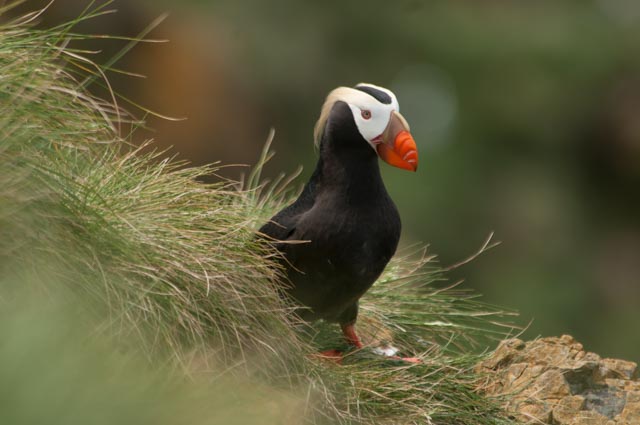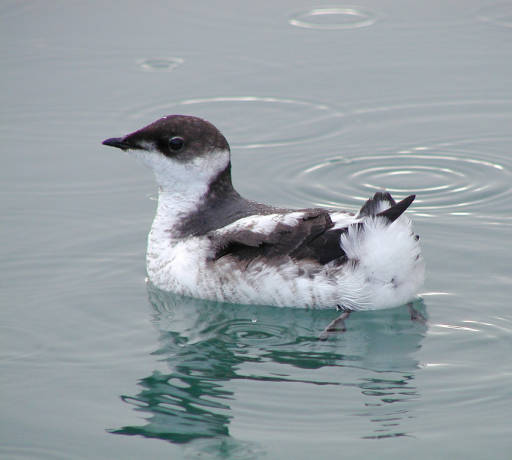It’s a little embarrassing to admit this but when I discovered the BC Breeding Bird Atlas tears came to my eyes. I know. I should get a life. My tears weren’t about sadness, though, they were about so many people, largely volunteers, working together to create this extraordinary resource. Over fifty volunteer regional coordinators and over 1300 local birders worked for five years (2008-2012) to create the atlas. This kind of commitment and passion is such a lovely counter-balance to all the discord and craziness going on in the world. (Trump? Really?) Maybe I needed a reminder that there is also “good” going on, good that doesn’t usually make the news, unfortunately.
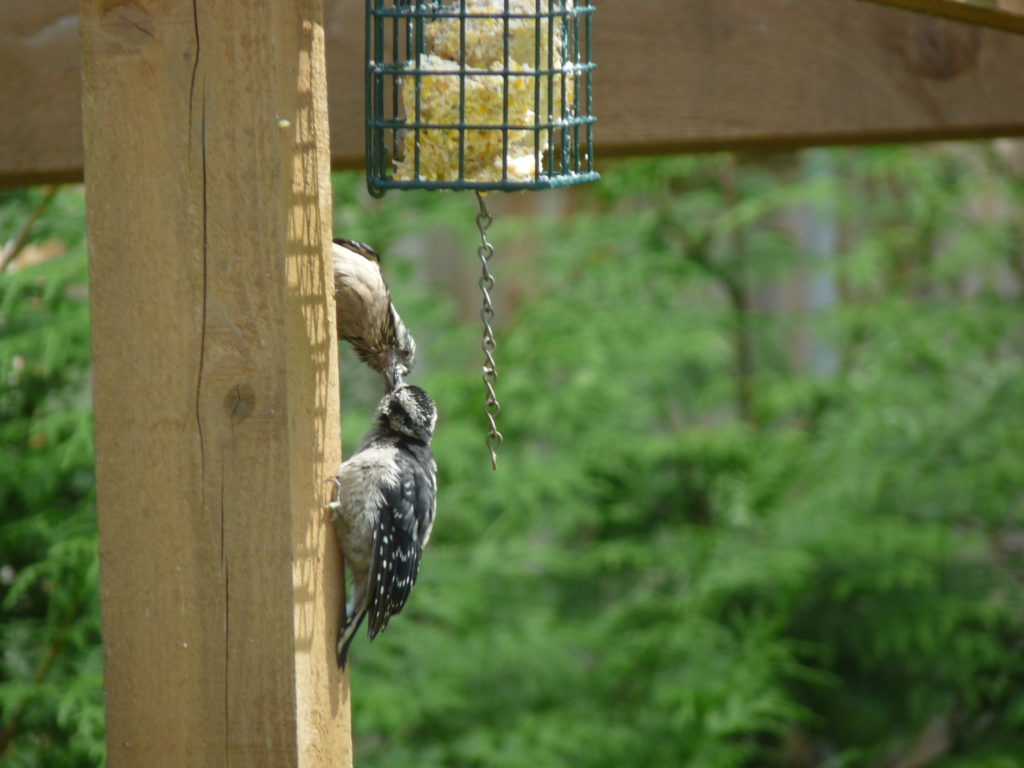
The “good”: feeding time for baby Downy. The not-so-good: a large decrease in Downy populations in the last decade in BC
The atlas is not a big hardcover book, as atlases were in my day, but an on-line interactive survey of the 321 species of birds known to breed in British Columbia. According to the website (http://www.birdatlas.bc.ca/), the purpose of the atlas is “to collect and make freely available to a wide range of users, the most comprehensive, current source of information on the province’s breeding birds, through citizen science.”
It’s such a great idea, citizen science. Who better than amateur birders in every corner of the province who pay attention just because they love birds? Their observations, compiled over the years, provide the kind of information that reveals trends that allow for good conservation decisions.
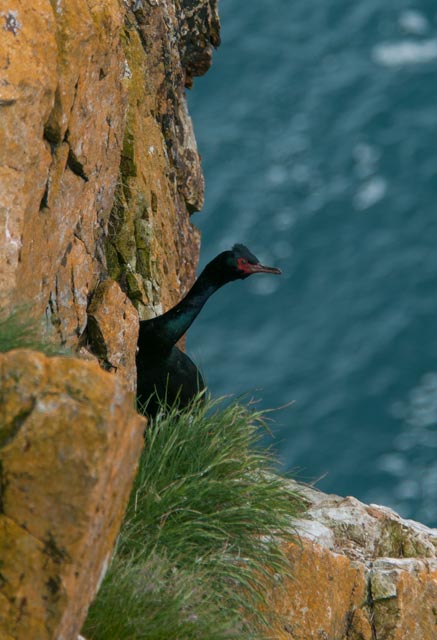
Pelagic Cormorants nest on cliffs, often in small colonies on remote islands. Photo by Catherine Jardine.
There is a LOT of information in the atlas. It includes an online book with Species Accounts for all 321 species that breed in BC. I recommend that you start by viewing the orientation video: http://www.birdatlas.bc.ca/site-tour/.
I first turned to the atlas when I got involved in supporting a group of islanders fighting the Port Authority who want to park five massive coal and/or oil tankers along the east coast of Gabriola, our little section of the Pacific Flyway. People living along that coastline sent me photos of the birds that call this little part of paradise home.
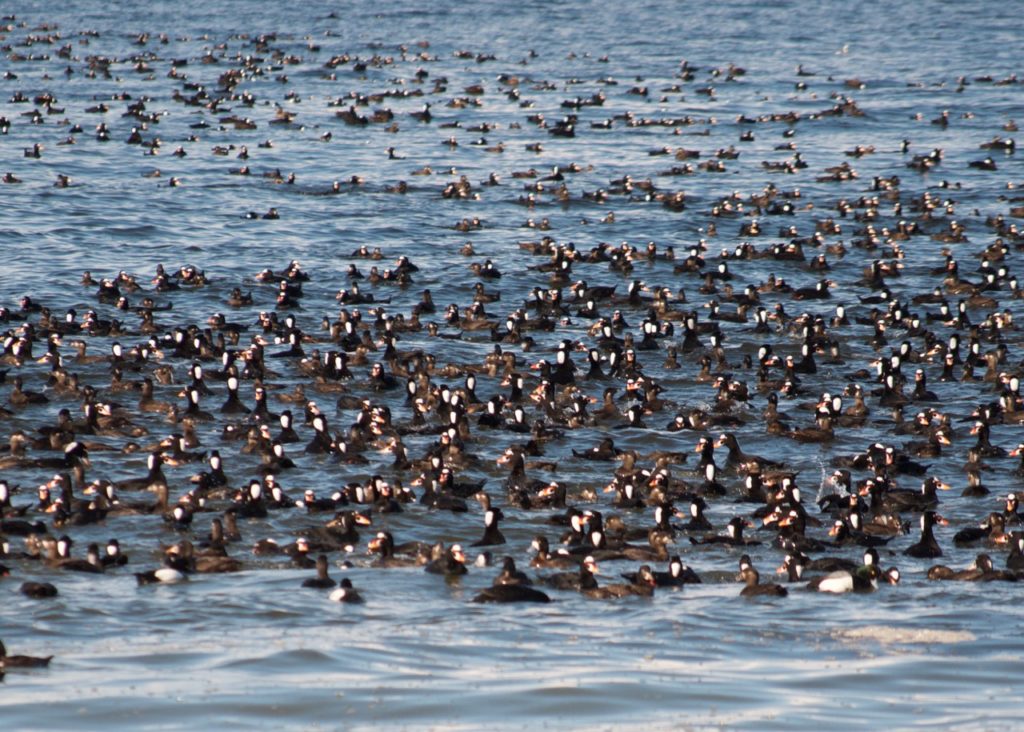
Buffleheads off the east coast of Gabriola, right where those megatankers would park. Photo by Bill McGann.
Among the photos was one of a Marbled Murrelet, that chubby seabird once known as the Australian Bumblebee.
I knew Marbled Murrelets (Brachyramphus marmoratus) were a threatened species in BC but not much else. The atlas provided a wealth of detailed information about these fascinating tree-nesters. I started on the Species Account page. There’s one column of information on: characteristics and range; distribution, abundance, and habitat; conservation and recommendations. One column doesn’t look like a lot at first. But don’t stop there! See those three little maps on the left side of the page, called Breeding Evidence, Probability of Observation, and Elevation Plot? Each one is an interactive map with six possible overlays!
When I clicked on Breeding Evidence a lot of little squares in red, orange, yellow, white, and grey were lined up along the coast of BC. Red = Confirmed breeding sites; orange = Probable sites; yellow = Possible; grey = Not Observed; white = Not Surveyed. There’s one red box (confirmed nest) along the southeast coast of Vancouver Island in the Georgia Depression. I couldn’t tell how close that nest was to Gabriola Island so I clicked on one of the six possible overlays, Cities and Roads and discovered that confirmed breeding site is south of Comox and north of Gabriola. Other overlay options include: Bird Conservation Regions, Coordinates, and Eco-provinces. Then, on the top of the column to the right there is a drop-down Fact Box and clickable graphs for: Bird Conservation Regions, Ecoprovince, and Biogeoclimactic Zone. It’s amazing how much information got packed into what at first appears to be one page. It’s like a three-dimensional universe that expands and collapses with the click of a mouse! (If this is a dumb analogy it is because I don’t read sci-fi.)
The atlas shows where Marbled Murrelets (MAMUs) breed and in what kind of habitat. It indicates that breeding evidence is possible or probable in over 100 10 km squares surveyed and estimates the BC population at 72,600-125,600 birds, about one quarter of the global population of MAMUs. (COSEWIC 2012).
Under Conservation & Recommendations the atlas says of the MAMU: Old-growth forest loss and fragmentation are considered the greatest threats to the species and higher breeding numbers are consistently correlated with accessible areas of suitable forest habitat (Burger and Waterhouse 2009). Other potential threats include oil spills, fisheries bycatch, boat disturbance and changes to marine habitat and prey stocks (COSEWIC 2012). I wonder if the Port Authority is aware of these risks?
I should mention for readers not keen on sitting in front of a screen all day: all the Species Accounts can turned into pdf files and printed!
My heartfelt thanks to all the people, volunteers and staff alike, who created this invaluable free resource. Well done!
For more citizen science opportunities, check out: http://birdscanada.org/volunteer/programmap/



